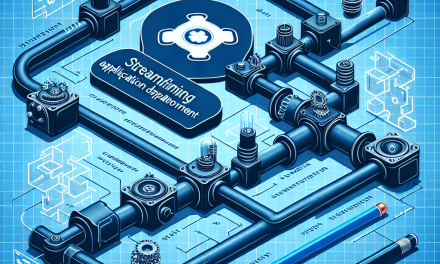In the realm of container orchestration, Kubernetes has emerged as the go-to platform, offering flexibility, scalability, and robust management features. However, the efficiency of Kubernetes hinges largely on its underlying container runtime. As organizations look to optimize their Kubernetes deployments, understanding the various container runtimes available becomes crucial. This article will explore the major container runtimes compatible with Kubernetes and discuss their strengths and weaknesses.
What is a Container Runtime?
A container runtime is a software component responsible for running containers. It provides the necessary environment for executing containers, managing their lifecycle, and ensuring they interact with the underlying host system. Kubernetes abstracts the complexity of container management but relies on container runtimes to handle the actual execution of containers.
Major Container Runtimes in Kubernetes
Kubernetes supports several container runtimes, each offering unique features and capabilities. Let’s take a closer look at the most prominent ones:
1. Docker
Overview:
Docker is the pioneer of container technology and remains a popular choice among developers and system administrators. Its extensive ecosystem and community support make it a go-to option for many.
Advantages:
- Ease of Use: Docker’s user-friendly CLI and comprehensive documentation simplify container management.
- Broad Adoption: A vast number of applications and tools are optimized for Docker.
- Rich Ecosystem: The Docker Hub provides a plethora of pre-built images for various applications.
Disadvantages:
- Performance Overhead: While Docker is capable, it may introduce some overhead compared to lightweight alternatives.
- Transition to Containerd: As Kubernetes moves towards using containerd (a core component of Docker), Docker may become less central in the Kubernetes ecosystem.
2. Containerd
Overview:
Containerd is an industry-standard container runtime originally created by Docker and is now a separate project under the CNCF (Cloud Native Computing Foundation). It offers a simplified and lightweight interface for managing containers.
Advantages:
- Lightweight: Designed to perform container operations efficiently with minimal overhead.
- Focus on Performance: Containerd operates in a ‘run’ mode, ideal for Kubernetes deployments.
- Integration Support: Built-in support for GRPC makes it easier to integrate with other systems.
Disadvantages:
- Limited User Interface: Compared to Docker, containerd does not offer an extensive CLI or graphical user interfaces.
3. CRI-O
Overview:
CRI-O is a lightweight container runtime specifically designed for Kubernetes. It implements the Kubernetes Container Runtime Interface (CRI), ensuring seamless integration.
Advantages:
- Kubernetes Optimization: Tailored specifically for Kubernetes, offering better compatibility and efficiency.
- Modularity: Allows users to add only the necessary components, keeping the runtime minimal and secure.
- Security Focused: Built with security in mind, integrating well with tools like SELinux.
Disadvantages:
- Limited Ecosystem: Smaller community compared to Docker, which may impact available resources and support.
4. gVisor
Overview:
gVisor is developed by Google and offers an additional layer of security for containerized applications. It runs containers in a user-space sandbox, providing isolation from the host kernel.
Advantages:
- Enhanced Security: By creating a layer between the container and the host kernel, gVisor significantly increases security.
- Compatibility: Supports standard container workflows, making it suitable for various Kubernetes environments.
Disadvantages:
- Performance Overhead: The added security comes at the cost of performance, which may not be suitable for all applications.
5. Kata Containers
Overview:
Kata Containers provide a lightweight virtual machine (VM) experience for containers, offering enhanced security while maintaining the performance of containers.
Advantages:
- Strong Isolation: Combines the speed of containers with the security of VMs, ideal for multi-tenant environments.
- Improved Compatibility: Compatible with existing container orchestration platforms like Kubernetes.
Disadvantages:
- Increased Resource Use: VMs generally have higher resource requirements, which may limit their use in resource-constrained environments.
Selecting the Right Container Runtime
Choosing the right container runtime for your Kubernetes deployment depends on various factors, including:
- Use Case: Assess the specific requirements of your application, such as performance, security, and complexity.
- Team Expertise: Consider the familiarity your team has with a particular runtime.
- Community Support: Evaluate available documentation, community forums, and third-party tools.
- Performance Needs: Determine if high performance with minimal overhead is a priority.
Conclusion
As Kubernetes continues to dominate the container orchestration landscape, the choice of container runtime plays a critical role in your application’s performance, security, and operational efficiency. By understanding the strengths and weaknesses of Docker, containerd, CRI-O, gVisor, and Kata Containers, organizations can make informed decisions that optimize their Kubernetes environments. As technology evolves, staying updated on the latest developments in container runtimes will be essential for harnessing the full potential of Kubernetes.
This deep dive into Kubernetes container runtimes aims to provide insights that empower organizations to optimize their container orchestration strategy effectively. As Kubernetes remains a pivotal tool in modern cloud infrastructure, choosing the right container runtime can greatly enhance your operational success.





